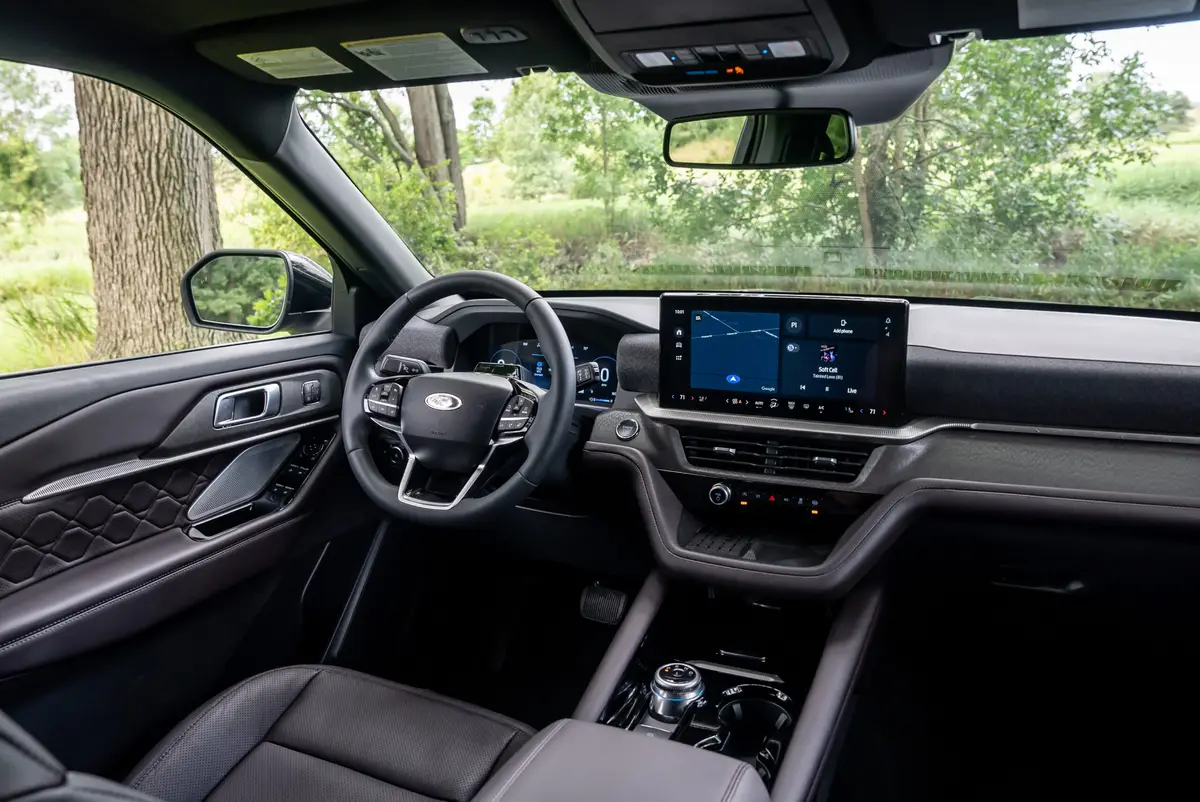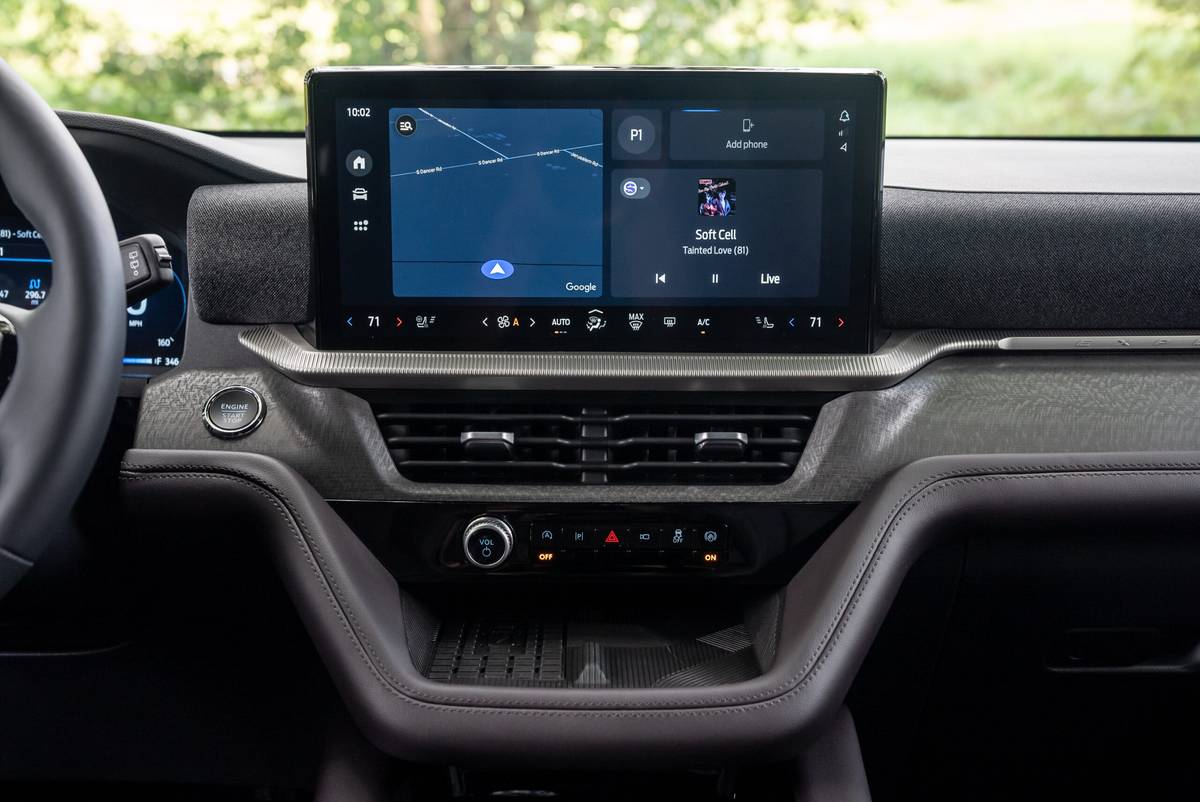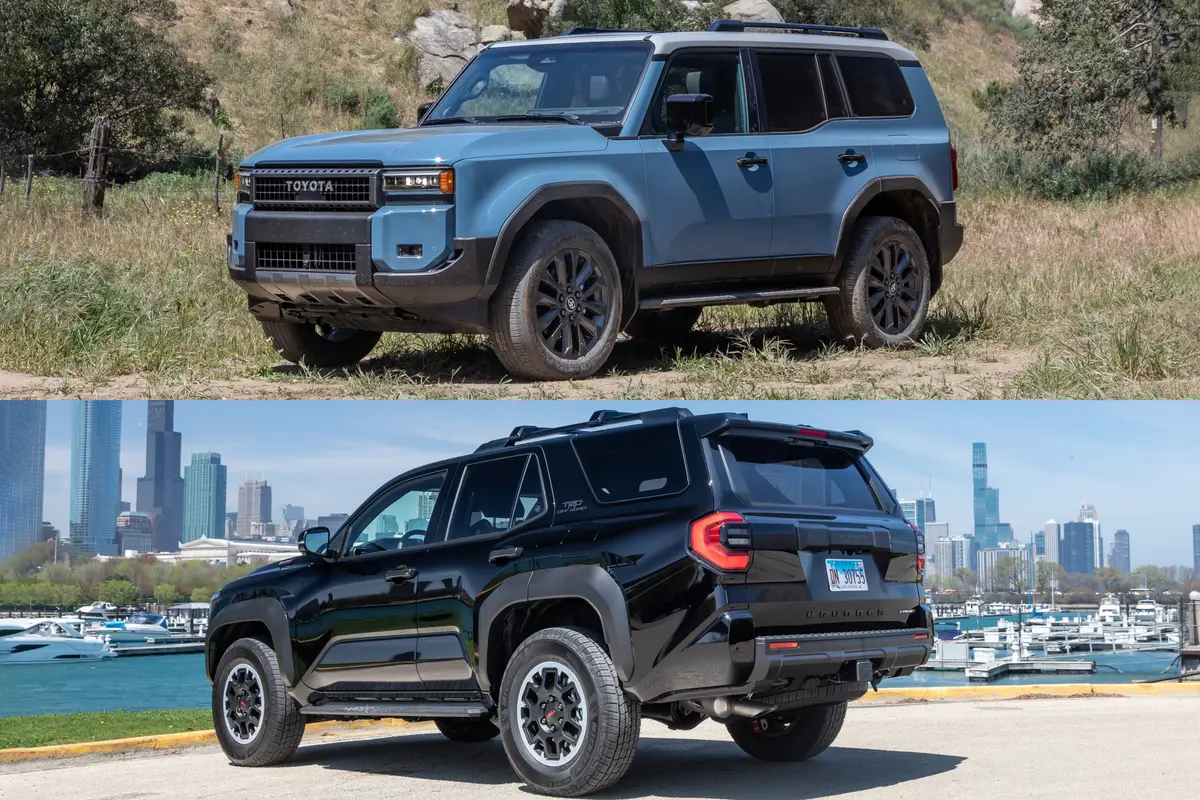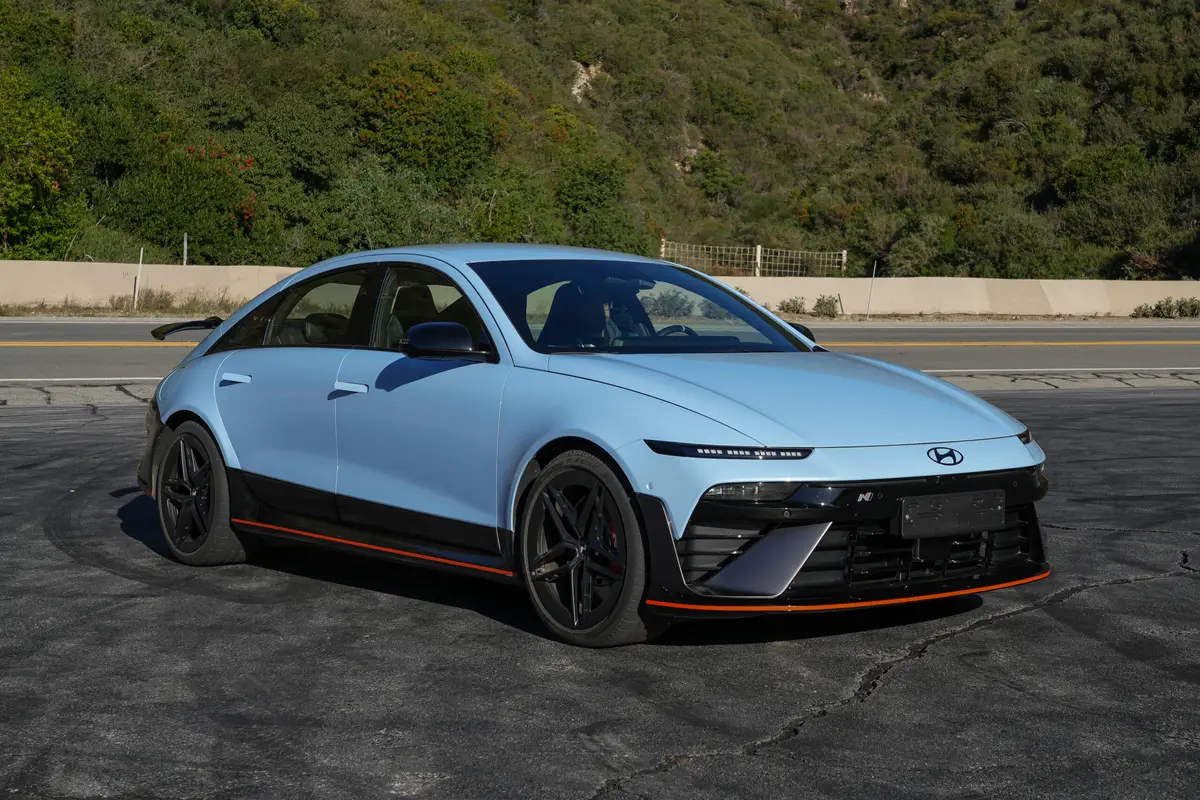Is the 2025 Ford Explorer a Good 3-Row SUV? 4 Pros, 3 Cons

The Ford Explorer is a mainstay among three-row SUVs, delivering a combination of practicality and style that makes it appealing to families. For the 2025 model year, the Explorer received a mild freshening to help keep it competitive against formidable competitors, such as the Hyundai Palisade, Toyota Highlander and Volkswagen Atlas.
- ${price_badge()}
- ${ami_badge()}
- ${battery_badge()}${ev_report_link()}
- ${hot_car_badge()}
- ${award_badge()}
- ${cpo_badge()}
${price_badge_description}
${ami_badge_description}
The EV Battery Rating is based on this vehicle's current expected range relative to the vehicles expected range when new. ${battery_badge_text}
This vehicle is certified pre-owned, backed by a manufacturer warranty, and typically undergoes a rigorous multi-point inspection to ensure quality and reliability.
This vehicle is currently in high demand given its competitive price, desirable features, and overall condition, and may have a higher chance of selling quickly.
Shop the 2025 Ford Explorer near you


The update brings an all-new interior along with new tech, styling tweaks and a lineup of trim levels that’s been cut by half to simplify ordering and production. What hasn’t changed is that the Explorer remains surprisingly entertaining to drive for a family SUV, making everything from grocery runs to family vacations more fun. Unfortunately, however, it can’t match competitors for value.
Cars.com Detroit Bureau Chief Aaron Bragman spent some time checking out a new Explorer on the varied road conditions of southern Michigan, and he found the changes address some, but not all, of our gripes. Tap the link above for Bragman’s expert review, or for a quicker rundown, keep reading to learn four things we like about the 2025 Ford Explorer and three things we do not.
What Do We Like About the 2025 Ford Explorer?

1. Lively Powertrains
All Explorers except the ST performance trim come with a 300-horsepower, turbocharged 2.3-liter four-cylinder engine good for 310 pounds-feet of torque. It’s paired with a 10-speed automatic transmission and either standard rear- or available all-wheel drive, and acceleration is lively and smooth. A twin-turbo 3.0-liter V-6 is standard with the ST and available with the Platinum; with 400 hp and 415 pounds-feet of torque, it’s enough to turn the Explorer into a street screamer and offers plenty of grunt accompanied by a throaty exhaust note.
2. Stealthily Sporty
The Explorer’s RWD chassis layout gives it a handling advantage over front-wheel-drive competitors. Combined with a choice of potent powertrains, that makes the Explorer surprisingly fun to drive for its size. The suspension is firm without being overly so, and the SUV’s steering offers nice heft and good feedback. A Sport mode quickens transmission and throttle responses for a more engaging driving experience.
3. Interior Improvements
A complete interior redesign addresses one of our biggest gripes with the Explorer, banishing its low-rent interior look and feel for much more appealing surroundings and higher-quality materials. Other updates include a simplified dash design with improved storage and a 13.2-inch horizontally oriented touchscreen, which we much prefer to the old vertically oriented screen. Ford has joined the Google-based infotainment system bandwagon, too, but it also retained wireless Android Auto and Apple CarPlay.
4. Simplified Selection
Ordering an Explorer got a lot less complicated for 2025, with a lineup of just four trims. The move is aimed at improving quality and bringing the Explorer more in line with its competitors. That leaves the new Active trim, the sporty looking ST-Line, the actually sporty ST and the top Platinum. Several option packages allow for additional customization, as well. For 2026, there will be a fifth trim joining the lineup: The off-road Tremor variant will be available for buyers looking to head into the woods.
More From Cars.com:
- 2025 Ford Explorer Up Close: Nicely Updated, Still Compromised
- How Much Is the Refreshed 2025 Ford Explorer?
- Auto Show Faceoff: 2024 Chevrolet Traverse Vs. 2025 Ford Explorer
- Research the Ford Explorer
- Find Your Next Car
What Do We Dislike About the 2025 Ford Explorer?

1. Google It
While the switch from Ford’s own Sync infotainment system to the Google-based Digital Experience interface gives owners easy access to Google apps, it relies on an internet connection to function. That means you might not even have access to voice commands without a signal, let alone navigation and other functions. (Fortunately, Android Auto and Apple CarPlay are still part of the package.)
2. Fewer Knobs
The new dash design retains physical controls for a few functions like audio volume, but it moves most other controls, such as climate functions, to the center touchscreen. Worse, some formerly quick adjustments now require more steps; it takes multiple taps just to switch from fresh to recirculated air, for example. The good news is Ford has at least avoided touch-sensitive steering-wheel controls in favor of physical switches.
3. Cramped in Back
Aside from the first row, the interior is largely unchanged, meaning the Explorer still comes up short on occupant and cargo space compared to that of some rivals. The third row lacks sufficient legroom for adults, and available second-row captain’s chairs are too narrow and lack support.
Related Video:
Cars.com’s Editorial department is your source for automotive news and reviews. In line with Cars.com’s long-standing ethics policy, editors and reviewers don’t accept gifts or free trips from automakers. The Editorial department is independent of Cars.com’s advertising, sales and sponsored content departments.
Featured stories



